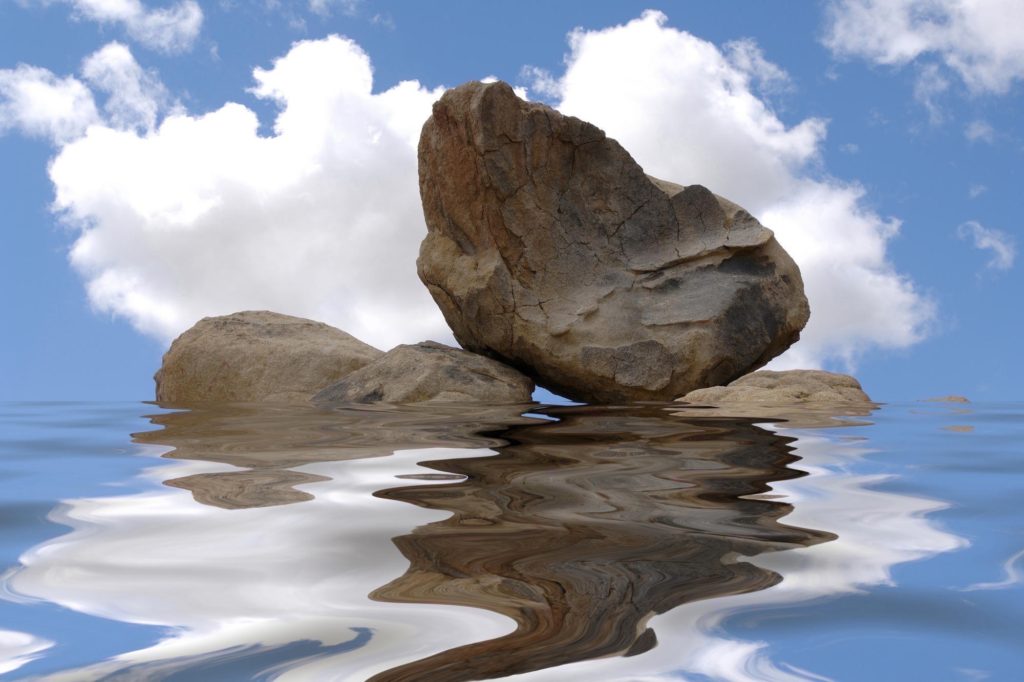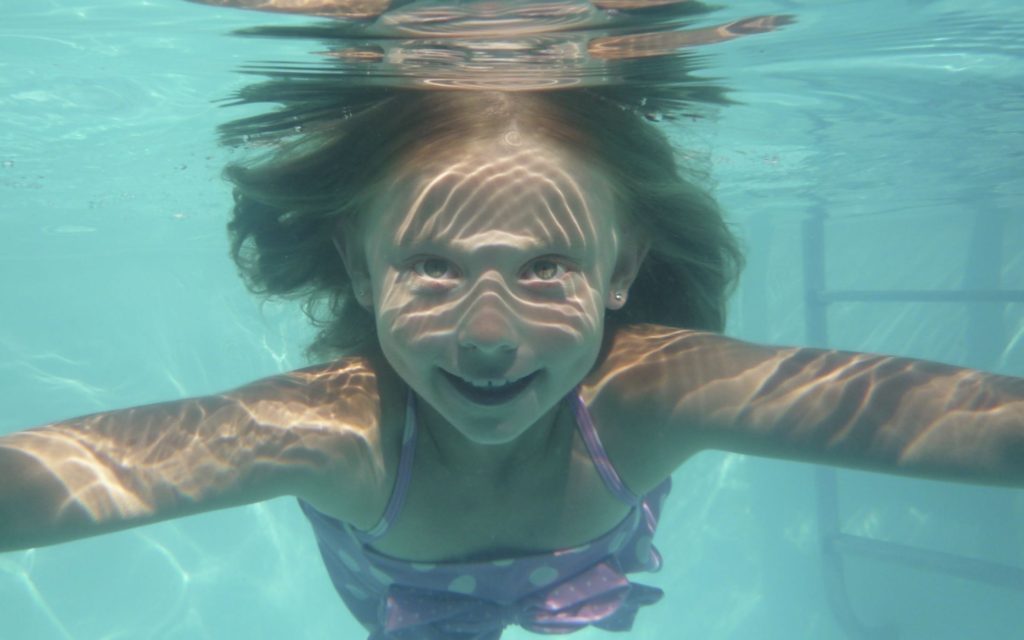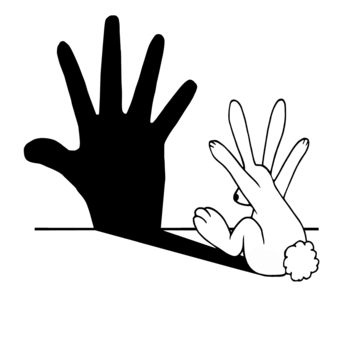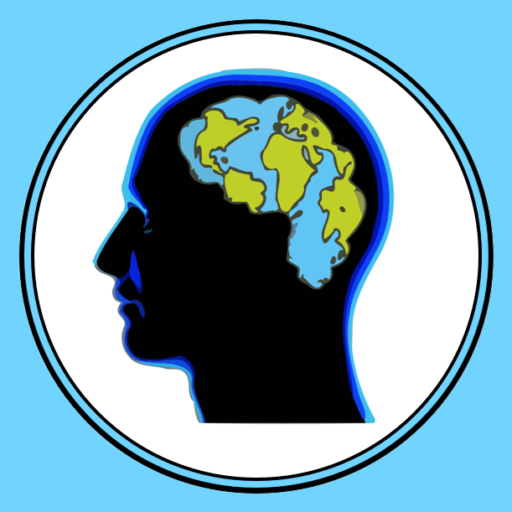
Some Reflections on Shadows
(A first aerial view of Image Valley)
This section is about ‘The Valley of Shadows and Reflections’ – a place quite different to the Copy Plateau that we have been exploring thus far. Different to the Copy Plateau because the shadows and reflections that populate this valley are created by the laws of physics, and not by humans. But similar to it as well, because the shadows and reflections that populate this valley create images of their casting objects that are indeed a form of ‘copy’ of these casting originals. However, these images are not part of the Original/Copy relationship because they are not the products of human nature, they are the products of physical nature. A fundamental difference in origin that is bound to lead to a major difference in both logic, and properties – as we shall see. We therefore refer to the domain of meaning that we are about to explore as the ‘Original/Image’ relationship.
The image, whether in the form of a reflection or a shadow, does indeed have an original (the casting object), and does indeed imitate that original, just like the copy in the O/C relationship. But there is a qualitative difference between the image and the copy. Because in the case of a shadow or a reflection, the original is actually part of a causal nexus that involves not just one, but three principal elements. Namely, the physical surface upon which it plays, the light source that gives it birth, and the casting object that gives it shape and substance. So whereas the copy can exist on its own, as an independent entity, the image cannot, because it is entirely dependent on the immediate and actual presence of its casting object.
However, providing these three factors are present and, importantly, in the right alignment, there will always be an image, and this is a fact that applies to wherever we are in the universe (for example, even the sun, which supposedly has no shadow, nevertheless has a reflection). In other words, images exist in their own right, but at the behest of the laws of physical nature. So, unlike the copy, shadows and reflections are part of the actual fabric of Physical Space, flashing in and out of existence, without any reference whatsoever to human plans and purpose. Which means that however much they then get assimilated into Genetic or Social Space by evolution and human purpose, their nature is elementally physical.
The helpful thing about coming to this area from another part of the landscape of meaning is that we already have a useful vantage point that allows us to make comparisons between the two relationships, to the explanatory advantage of both. But before we go into that, and before we examine the properties of the image, let us ease into the world of shadows and reflections through a visual medium other than that of cartoon humour.
To wit, below are some photos that demonstrate our fascination with shadows and reflections. In fact, we do not need the help of a cartoonist to make this world of images a source of interest because they have their own intrinsic appeal. But there does seem to be an asymmetry towards the reflection in these photos. A bias which emerged during the sifting out of suitable examples for this section from my quite extensive photo collection, where it became clear that there were far more photographs of reflections than of shadows. Was this just a personal bias, or was there more to it? Well, the thing is, shadows are by nature, dark and shady, whereas reflections show a great deal of detail and colour right across their whole surface, making them rather more photogenic than the picture of a shadow.
So naturally reflections make prettier shots, and are therefore probably more popular than shadows. However, the tables are turned when it comes to animated cartoons or movies, where the shadow has an advantage over the reflection. The advantage is that the shadow enjoys much greater freedom than its cousin, the reflection. This freedom is based on the fact that whilst the reflection is limited to a restricted habitat, being totally dependent on the whereabouts of mirrors, lakes and ponds for its existence, the shadow is not confined by this limitation at all. In fact shadows are free to roam widely across the physical landscape, because as long as there is reasonable light, and surface to hand, there can be shadows in play, which makes them ideal candidates for moving cartoons, where such a freedom can be properly exploited.
However, there is one area in single shot photos where the shadow does have an edge. Because although we are likely biased in favour of reflections (because of their detail and colour), there is clearly still plenty of room for interest in the world of shadows, especially when the carrying surface is curved. Which is what we find in this photo below of an avalanche fence, off-piste in the ski domain of Val d’Isere/Tignes, in the French alps.
.jpg)
Why is this photo appealing? After all, we know that shadows hug the surfaces they are cast upon, and that if the surface is distorted then the shadow must faithfully follow that physical condition too. So what, if any, is the graphic value to be found in this particular shot of a snow fence? Well, it helps that there are actually two snow fences, and that the surface conditions of the two are opposite to each other, so that one shows a bulge in its shadow, and the other a dip. This difference makes a good visual contrast to the original fences, which are identical and straight. But the difference in scale of the shadows compared to their originals is also compelling, because the fences seem unable to compete with such large and almost living representations of their own strictly linear small scale latticing. Perhaps also, and despite our perfectly good knowledge of how shadows behave, we carry an idealised mental picture of the shadow as a 1:1 representation of the casting object that this photograph is therefore at variance with. A possibility that makes this scene with the two shadows a serious departure from the supposed norm, and therefore of more interest than the idealised case of a normal fence with a normal shadow. As we see if we compare this photo to a similar one taken in Scotland (below), though this time it is with the snow fence casting a reflection, rather than a shadow. A comparison that shows a clear difference in the relative appeal of the two shots.
The point being that the literal representation of the fence that we see below is simply a straight reflection in the water. So just like the idealised norm of the straight shadow, the reflected double that we see in the melt water pond offers us little of extra interest. The reflections cannot be compared with the dramatic contrast between the casting objects and their shadows in the first shot because there is no such contrast. Which is why the first photo of the shadows, spreading out across the snow, resting, as they do, on a differential curve in the snow slope – one convex, one concave – is the more appealing of the two pictures.

Even so, there is still something to be said for the less appealing version from Scotland, and it is this. Both reflections and shadows offer us a pleasing visual symmetry through their presence as inverted doppelgängers. The images may appear upside down most of the time it is true, but they offer us a world of bilateral symmetry in doing so, and as we are bilaterally symmetrical ourselves, this may be why we relate to this aspect of the reflection so well. For example, in the next photo of a lake in Lithuania, the symmetry is almost complete (the bird is mysteriously absent from the lake, even in the original shot), and this gives a sense of completion to the view of the sky and lake that would be quite absent otherwise.

Perhaps this is also an example of why photo collections are somewhat more likely to feature reflections than shadows. Because no shadow is going to offer us the richness of detail that makes this photo such a pleasure to look at. In addition, we also find the world of colour very appealing too, so it is no wonder that the shadow finds it hard to keep up with the advantages enjoyed by its cousin, the reflection.
But for variety, let us look at another shadow photo, taken at the ‘Taj Banal’ (yes, that’s my name for this grandiose tomb, which I have to say is vastly inferior to the new, stunning, and generally unknown Akshardham Temple complex in nearby Delhi). And in this particular shot, despite the fact that it features a shadow, we do find some interest in the visual detail of the patterns on the ground and wall.

Now, one reason that this particular example is more interesting than usual (for a shadow) is that the casting object is internally cut to allow more light through its interior surface. So the internal pattern of the partition is itself echoed in the shadow on the nearby wall, which makes this comparable to the shadow of the snow fence photo. That is, in this particular case, the object has its own, ‘internal life’, and therefore the shadow does indeed compare with what we normally take for granted in a reflection (and rarely expect in its humbler cousin). Again, such shadows are more likely to appear as a photograph in a collection because, whereas their less interesting cousins block the light, making the image tantamount to a mere silhouette, the object with an internal life creates an image that reveals much greater detail, just like a picture (though in truth, this detail is still just an extended form of a silhouette even so).
In the next photo example, taken in Versailles, the view is straightforward enough. But if we rotate it, in order to make the second version that lies below this first one, then the duplicity of both sides of this O/I relationship becomes as clear as it is intriguing. So which is the correct way round? Well, clearly the top one, because there, the vital clue that is the upper background view has been retained. Or is it so clear? For example, looking at the ripples should be instructive because it is hard to credit that they look the same either way round. Nor is the water dragon a lot of help: in the second photo, the ‘washed out by light’ member of the pair is suggestive of a reflection, whilst the apparently more detailed dragon looks to be the casting original.

Well, it may not be hard to see what is real and what is not, but it is not that easy either. And either way, this simple test shows us just how much the reflection is faithful to its original, and just how interesting this therefore makes such images to our human circumspection. Because just as we find copy duplicity intriguing, so we find this naturally occurring version intriguing too (and it is offered to us all, free of charge, by courtesy of the physical universe).

Incidentally, copy duplicity and manipulation are involved in this arrangement as well, because both the above photos are copies, and this facilitates an exaggeration of the ambiguity we seek to show here. Oh, and yes, it is the first one that is the original copy of this particular image, and its original.
In the next photo, we find that although the reflecting surface is steady enough for the image to be recognisable (in this case the subject is nothing more wonderful than a rock in water) it is nevertheless warped and seriously out of shape. The point being that the one redeeming feature of the shadow that helps it figure in the average photo collection, namely that it can be warped to make interesting shapes, is also shared by its ‘competitor’ the reflection.

We have seen that the normal copying fidelity of the image can give us the chance to play the confusion game, as with the rotated reflection of the sea monster in Versailles. So, in this alternative warping of the image that we see above, and with the snow fences, we get the chance to also enjoy the distortion game. But it is surely the latter that exercises and excites the human mind most. Because images can create all sorts of splendid effects all on their own, such as the shadows of ripples cast on my daughter Nikita’s face and arms below, and the reflections in the next picture of a building in Hong Kong, giving images an artistic expression unlooked for by the laws of physics.

It is hard to decide whether the photo of those markings of light and shade are just a matter of shadows or whether they are reflections as well, given that the patterns come from above, where light has been reflected downwards from the mirror of the pools surface. But it would be nice to find that both shadows and reflections are involved in this underwater shot and, either way, the effect must be even more stunning in video slo-mo.
In the following photo, the identity of the casting object has been so changed that we no longer see the original building in the reflection in the neighbouring skyscraper. Instead we see a pleasing impression that joins with the pattern of the window frames in the neighbouring building to make a feast of lines and curves. A feast that belies its humble origins in what are otherwise two rather boring looking formal and geometric structures, it should be added, because that is the very power of the image to excite attention (the snow fence shot on the curvy snow is the shadow equivalent of this picture because the fence also has a simple formal shape that benefits from distortion).

To conclude then, the above photos are useful because they introduce us to some of the characteristics of the Original/Image relationship. Certainly, they are not intended to be examples of visual humour. Yet there is a sense in which these photos are ‘fun’ – as opposed to ‘funny’, and it is worth examining the difference between the cartoon and photographic genres to see what that means.
The aspect that makes these photos fun may simply come down to the fact that both shadows and reflections are, like our friends the copy and the visual pun, a pre existing form of twist in their own right. After all, as has been discussed already, it seems that doubles are intrinsically appealing. Because although we know them to be a normal fact of life (with puns, twins, look-a-likes, reflections, shadows and copies all occurring on a regular basis), they are also, and in some hard to fathom way, always strange.
As noted elsewhere, being a father of non identical twins (that quite closely resemble each other), gives a first hand experience of how fascinated many of us are by such similitude. But on the other hand, it has to be said that as adults, we are not so greatly excited by the doubles created in the O/I and O/C domains as we may be as children. In fact, in the case of puns, we often enjoy looking down on them, as childish and cheap forms of humour. Which, given how commonplace they are, is hardly surprising. But children are a different matter to their parents. Because little kids can be both fascinated and amused by such simple things as a shadow, reflection, puppet or picture, especially when they are allowed to interact with them, and even modify or create them on their own. Which is to say that, for children, these doubles are clearly a form of twist in a world that is, to them, in any case, brand new.
Yet when it comes to cartoons that are based on these same commonplace phenomena, but which then twist the commonplace to create a new arrangement, we adults are back in the frame, clearly finding enjoyment in such a result. For it is by making the familiar copies and images look like something bright and new, that humour enables us adults to look at what we take for granted afresh. As if, indeed, we were once again children.
By mainly considering still photos so far, we have sidelined one of the key things that most of us find the most fascinating thing about both reflections and shadows. Namely, the way in which they slavishly follow their casting objects every move, performing all sorts of visual gymnastics in order to stay faithful to their ‘master’, along the way. Gymnastics that arise as much from the angle of the light source, and the nature of the surface, as from the antics of the object itself. But gymnastics nonetheless, as they bounce up onto a nearby wall, and then down again to the ground, to then lengthen out to infinity, or contract back down again from a different and short order light source. So yes, images are fun when movement is involved too, and again, most especially for children.
Now let us look at a cartoon that uses the Original/Image relationship as the source of not just fun, as with the photos above, but as the source of something more than that. So, in the following cartoon, we see that the shadow cast by the rabbit closely resembles a hand. A fact that needs some explaining given that rabbits normally cast shadows that resemble rabbits…

The cartoon sets us a problem – why should the rabbit cast the shadow of a human hand? Well, by the looks, we can see that the rabbit is making an effort to do just that, but the real answer as to why our rabbit is making this effort lies off stage. Off stage, in this case, in the knowledge that as children, we have all played with our hands to make shadows on the bedroom wall at night with a torch, and that these shadows can look like an eagle (that’s the one that needs two hands together), or for example like a rabbit. So suddenly light dawns. If we can turn our hand into the shadow of a rabbit, then the rabbit can turn its body into the shadow of a hand. Meaning that the rabbit is behaving in a human way, reversing what we do to rabbits, and throwing it back at us, in a visual challenge of some serious graphic force.
So what we have here is an example of a picture that goes beyond what the photographs are doing. That is, the cartoon is not just trying to be fun, or intriguing, but actually to be funny, and it does this by poking fun at our having fun with shadows. And it does this through the agency of the rabbit as a way of driving this point home. Because being mocked by a small defenceless creature is more effective than being mocked by a fellow human being.
What then does this suggest to us about the difference between ‘fun’ and ‘funny’? Well, ‘funny’ involves a deliberate twist, but ‘fun’ seems to celebrate a form of twist that is generally unsophisticated and perhaps the principal domain of children. And if it seems wrong to call this form a ‘twist’ (because it is too commonplace to be the unpredictable thing that we really mean by the term ‘twist’), then we might reflect on the following point. Namely, that an advanced alien life form could easily feel the same way about our adult humour as we do about our kids source of amusements… Indeed, having gone through the systematic analysis of copy and image twists on this site, one might be in a position to adopt just such a superior position on the quality of this humour oneself. Because in understanding it better, and in appreciating what is involved in its creation, this humour then becomes really familiar and easy to recognise (rather like an old friend). Though whether that makes it less enjoyable is arguable. Because an appreciation of the thought and indeed luck and hard work that goes into the creation of such apparent frivolity is likely to do the opposite; encouraging more, rather than less recognition of its worth in the process.
Well, either way, the next step is to understand more about the nature of the valley of shadows and reflections. To wit, if this little excursion here was devoted to the natural history of images, then this next step is devoted to their ‘biology’.
